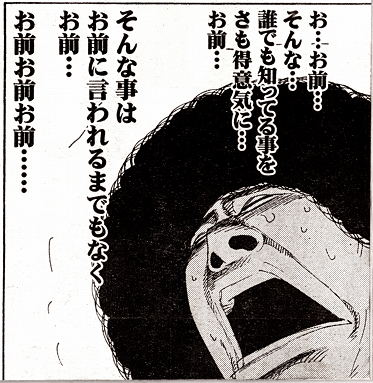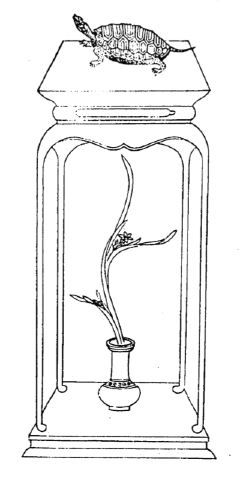Tell me (your name)!
Today I present another tale of Man'yōshū editing derring-do, this time featuring poem #1.
Yes, that's right: 1. The very first poem in the entire collection. You might think that copyists would be able to stay motivated long enough to get the very first poem done without transcription errors, especially as it is attributed to Emperor Yūryaku, ancient symbol of the Yamato ascendancy.
But no. The poem is irregular in a number of ways, including metrically, and few editors have managed to resist the temptation to propose a set of regularizing amendments.
Let's compare a couple of translations. First, Helen Craig McCullough's version in Brocade by night: "Kokin wakashū" and the court style in Japanese classical poetry:
O maiden
with a basket,
a pretty basket,
with a scoop,
a pretty scoop,
maiden picking greens
on this hillside:
I want to ask about your house;
I want to be told your name.
In the sky-filling land of Yamato
it is I
who rule everyone
it is I
who rule everywhere,
and so I think you will tell me
where you live,
what you are called.
Next, Earl Roy Miner's translation, from An introduction to Japanese court poetry:
With a basket
A pretty basket,
With a trowel,
A pretty trowel in your hand,
O young maid gathering
Greens on this hill,
Tell me your home,
Tell about yourself.
I hold the power
Over this land of Yamato
Broad under heaven,
And I am a chief known to all;
Famous everywhere,
My power is known to all.
And so to no one else,
Yes, to me alone,
Tell of your home and your name.
There are a few differences that might be explored here, but the one of most interest to me is the first house/name query. McCullough has "I want to ask about your house/ I want to be told your name." Miner has "Tell me your home/ Tell about yourself." The absence vs presence of "name" is not an artifact of translation: it actually reflects different approaches to the text.
Consider the traditional version of the Japanese part corresponding to these two lines, with a fairly standard "reading". Here I'm going to follow Bjarke Frellesvig's practice and use regular text to romanize logographic writing, and italics for phonographic writing:
... 家吉閑名告紗根 ...
... ipye kikana/ norasane ...
So ipye, "house", is written with 家, which is the Chinese character that means house. We therefore don't know for certain that the first person to write it down as part of this poem meant it to be pronounced ipye — but tradition tells us that it is, and that there are no strong completing claims, so we accept it without complaint.
Kikana is written with three characters used solely for their phonetic value: 吉閑名, not their meaning. We are fairly confident that our understanding of how Chinese characters were used for phonetic value is basically correct, so we assume that this part was meant to be pronounced kikana.
Now, if we translate ipye kikana/ norasane literally, we get "I want to ask your house/ Tell me." There is no word corresponding to "name". The character 名 is in there, and this means "name" and is used for that meaning (i.e. logographically) elsewhere in the MYS, but here we are interpreting it as strictly phonetic: the -na at the end of kikana.
So was McCullough's "name" added as something to be implicitly understood in the text, like her "O maiden"? No! In fact, she was working from a different interpretation of the text. Check out the romanized "originals" that McCullough and Miner supply:
McCullough: "... ie kikana/ na norasanu ..."
Miner: "... Ie kikana/ Norasane ..."
McCullough includes a note saying that her line 9 has been "[e]mended to follow the [Shōgakukan] Nihon koten bungaku zenshū edition; the NKBT [i.e. Iwanami Shoten Nihon koten bungaku taikei] edition omits the particle [sic!] na."
That is, the 1957 NKBT edition (ed. Takagi et al) reads the text in the "standard" way I described above: ipye kikana/ norasane (which they write, in modern orthography, "家聞かな/告らさね". In a footnote, they explain that there is a tradition of reading the phrase "家聞かな/名告らさね" (i.e. with /na/ appearing twice in a row), but they don't feel it is supported: for that, you would have to get the /-kana/ out of 閑 alone, and for complex reasons that I won't go into they argue that this is implausible.
I don't know what the NKBZ edition McCullough was working from says, but in the Shin Nihon Koten Bungaku Taikei (ed. Satake et al) edition, which is to say Iwanami's update on Takagi's 1957 NKBT edition, the position is that "家吉閑名告紗根" is a corruption of "家告奈名告紗根", which they read "ipye norana/ na norasane". Thus, not only do they find the extra /na/ for "name", they also change the verb used in the first part: it goes from "I want to ask your house" to "Tell me your house". (They have a couple of older sources for this amendment.)
If we grant that the mistranscription from 告奈 to 吉閑 is possible (and it's not as crazy as it seems, if you consider the calligraphic forms rather than the print ones), this actually is an attractive theory in some ways. First, it forms a better parallel with the end of the poem, where "house and name" are both explicitly mentioned. Second, it unifies everything to the verb noru, which I suppose earns it points for neatness. Third, it removes the slightly suspicious situation whereby 閑 appears in this poem but nowhere else in the entire MYS. And fourth, it brings the use of norasane in line with the other two instances in the MYS which are both "汝が名告らさね": na ga na norasane, "Tell me your name!", with the object explicitly included.
On the other hand, the "con" column has two big issues. The first is that getting the meaning "Tell (me) X" from X norana is a bit of a stretch. Satake et al assure us that it is possible, but it's more usual to see the bare -na used to mean "I want to X" (as in kikana) or "I hope that (third party) Xes."
The second is similar to the one discussed in my last post. The poem isn't obviously broken in its na-less form. It was good enough for Takagi in 1957, for example. Satake et al's proposed amendment is a little too ingenious. It takes me back to studying Old English in university, where the bolder and more ingenious a proposed "fix" was, the more likely it was to be proven inaccurate by later developments in the understanding of the language itself and/or meticulous examination, with better technology, of the primary sources.
![[No-sword]](http://no-sword.jp/images/site/no-sword_banner.jpg)




